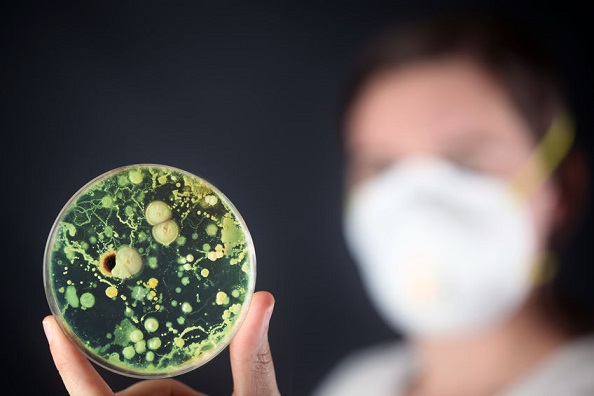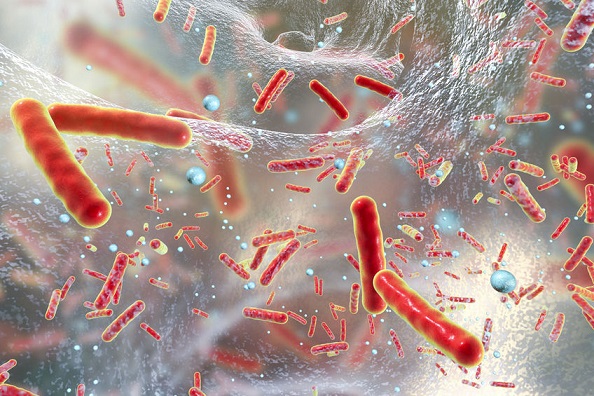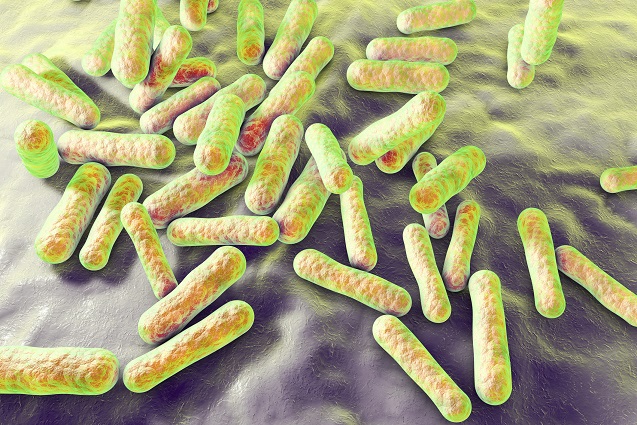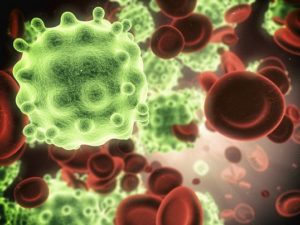 Not so long ago, we examined a little known character in the vast world of friendly bacteria. It was staphylococcus epidermidis, which is part of the same family as MRSA, but nowhere near as infectious. This species is found on almost all human skin, but seems to be a bitter enemy of p.acnes bacteria, and our question was whether we could take advantage of that happy fact.
Not so long ago, we examined a little known character in the vast world of friendly bacteria. It was staphylococcus epidermidis, which is part of the same family as MRSA, but nowhere near as infectious. This species is found on almost all human skin, but seems to be a bitter enemy of p.acnes bacteria, and our question was whether we could take advantage of that happy fact.
It ties into the almost weekly developments in bacteria, controlling these microorganisms for our own acne-clearing ends, wielding the puppet strings of clear skin. Bacteria form your body’s “second brain”, and their 10 trillion cells outnumber your own 1 trillion cells with ease.
However, we left things on a cliffhanger, saying that despite the species’ potential, real improvements in acne aren’t guaranteed to appear.
Now, we have a new study on the s.epidermidis question, released in June 2020.
Where we stood
30 years ago, s.epidermidis was presumed to be just as deadly as its rival propionibacterium acnes.
The logic – it hung out in skin pores, acne headquarters. But as friendly gut microorganisms are identified and this flood of discoveries spreads to the skin, its reputation has been restored.
Specifically, s.epidermidis acquires its precious energy by fermenting glycerol, your skin’s natural moisturiser (alongside hyaluronic acid). This creates by-products called succinic acid and butyric acid, invisible bullets which cripple acne bacteria.
Everything is clearly mapped out. The succinic acid penetrates into p.acnes’ cell membrane, and puts itself to work lowering the intracellular PH. Attempting to reverse this, p.acnes then uses its last proton reserves in a final, desperate effort. Before you know it, the acne causing villain that gave you so much trouble has vanished, gone forever, or one cell of it anyway.
The same thing happens when s.epidermidis ferments sucrose (table sugar), and because p.acnes cannot ferment sucrose itself, it’s a completely one sided form of attack.
The murky world of topical bacteria got a little clearer, the skin microbiome. These discoveries hinted that prebiotics could fuel s. epidermidis selectively, tempting your own microorganisms with delicious treats to enter your service, and then take out acne on your behalf. It’s an indirect but promising method.
Certain s.epidermidis substrains have unique powers, as strain 14.1R uses contact-dependent inhibition to inject toxins directly into p.acnes. The laundry list of powers would make your brain hurt. Some create DNA severing enzymes called serine protease, others create the antibacterial peptides lactococcin-972 and epidermin.
Instead of killing bacteria, the future may be bacteria manipulation, in blue-tinged natural creams alongside tea tree oil and tamanu oil. In 200 years, it could be the norm; articles like this will look as primitive as 18th century doctors first discovering vitamin C in an orange.
But there’s still several obstacles. Firstly, that the interactions between bacteria strains are incredibly complex. It’s possible that p.acnes could adjust to succinic acid after X number of weeks. It might increase its own antibacterial peptides like acnecin and jenseniin G in response. Maybe it produces unknown fermentation byproducts itself, by fermenting the oil clogging your pores (its main fuel source).
If the two live in equilibrium normally, then they might have evolved natural systems against each other, which a 6 week experiment might not factor in. Only a 2 year study would settle it for good.
The world of bacteria is like one of those underground cave systems where we’ve penetrated two miles deep, and already encountered all sorts of wondrous treasure and glowing stalactites, yet we know full well that we’ve only scratched the surface.
Will today’s study shine a light on this promising acne path?
The fresh study
 The experiment had five separate arms. In each, staphylococcus epidermidis was made to ferment polyethylene glycol (PEG)-8 Laurate, which hasn’t yet been tested.
The experiment had five separate arms. In each, staphylococcus epidermidis was made to ferment polyethylene glycol (PEG)-8 Laurate, which hasn’t yet been tested.
Specifically, PEG is a cosmetics ingredient, found heavily in sunscreens and sun-protecting moisturisers. It’s an adjuvant, an ingredient included to enhance other ingredients, whether it’s HIV medications or hepatitis B vaccines. PEG comes in many combinations, and today’s was with lauric acid from coconut oil. Lauric acid is actually highly antibacterial, but importantly, they tested PEG-8L in isolation and p.acnes was unaffected.
Therefore, any benefits today will be purely from the fermentation. PEG-8L was chosen because bacteria can break it down for carbon, like sucrose last time, increasing the possibilities for fermentation.
The first experiment was basic, as both p.acnes and staphylococcus epidermidis were placed in a petri dish at body temperature (37C). They were given PEG-8 laurate inundated with phenol-red colouring.
Neither strain grew in size. However, with s.epidermidis, far more red colouring was converted to yellow 12 hours after incubation, proving that fermentation was happening, just like with sucrose and glycerol. With p.acnes, nothing happened.
So next, two groups of mice bravely volunteered. Every mouse had both p.acnes and staphylococcus epidermidis injected into the ear, but one group had PEG-8L as a bonus.
The goal – to test whether the fermentation was beneficial in a living organism. Not quite a teenager with pre-exam pimples, but better than a petri dish.
The result – the mice also injected with PEG-8L experienced significantly less swelling and redness. After 5 days, the raw numbers of p.acnes were much lower, while staphylococcus epidermidis dominated, as measured by CFU/L, like on a yogurt pot. Acne is one step away.
It decreased inflammatory chemicals
Next, scientists took a sample of the mices’ ear from both groups.
They were left for 5 days, and the immune system response triggered by p.acnes were tested. This assault is where the whole pimple story starts, so it’s a real crunch moment for acne.
Without PEG-L8, the inflammatory cytokine MIP-2 shot upwards, but with the fermentation fuel, the reduction was dampened. MLP-2 stands for macrophage-inflammatory-protein 2. It’s an immune system cytokine, but it isn’t any old name in a scientific textbook: it’s a direct mouse parallel of our own interleukin-8.
Quite simply, no inflammatory chemical is more linked to red, oozing pimples. Activated by the master molecule NF-KappaB, acne-affected skin cells are confirmed to be flooded with IL-8. One study found that in acne patients, IL-8 genes were increased 52 fold.
Generally, hyperactive immune systems correlate closely with the interleukin-8 inside them. If the immune system was a king’s palace, then interleukin-8 would be the corrupt servant doing a deal with p.acnes behind everyone’s back.
Like with the mice’s ears, adding s.epidermidis alone did nothing – fermentation was the key.
Antibiotics became more effective
 The final phase was seeing if the fermentation could soften up p.acnes for an antibiotic onslaught.
The final phase was seeing if the fermentation could soften up p.acnes for an antibiotic onslaught.
Firstly, I don’t recommend topical antibiotics whatsoever, let alone the destruction of oral ones (they’re indiscriminate against friendly bacteria), but that doesn’t stop the experiment from being a fantastic indication.
Alone, 1% clindamcyin reduced p.acnes counts massively, while 0.1% concentration struggled. But when extracts from the original s.epidermidis fermentation were added, the antibiotic gained new and frightening powers (for bacteria, not you). 0.1% clindamcyin reduced p.acnes colonies and p.acnes growth much more effectively. P.acnes-stimulated MIP-2 was 55% lower, at 7685 ng/mL versus 3469 ng/mL.
Whatever by-products the fermentation churned out made p.acnes more sensitive to attack. That’s the only thing missing – that unlike the promising succinic acid last time, the scientists didn’t actually identify those by-products.
Most promisingly, this power could apply to natural remedies, like tea tree oil and tamanu oil. Maybe s.epidermidis causes structural weaknesses in the cell membrane, making p.acnes vulnerable to a final assault. Maybe it depletes the ATP energy bacteria uses to repair itself. Or perhaps it was killing p.acnes itself, and adding to clindamcyin’s score.
The final showdown was repeating the antibiotic experiment in a petri dish, containing both bacterial strains. Again, 1% clindamcyin brushed p.acnes aside, while 0.1% was weaker, but mixing in PEG-8L made the p.acnes colony disappear much faster. A clear inhibition zone was seen, surrounding the exact point where PEG-8L was added.
It’s the same story: s.epidermidis gains rare acne powers when given fermentation fuel.
Why the study is so great
The first reason is simple: it reinforces all the information we already know. It makes the old fermentation theories of sucrose and glycerol stronger than ever.
Today’s study didn’t search for the exact metabolites, but the odds are that fatty acids were involved again. This study hinted at it, feeding the similar polyethylene-glycol-dimethacrylate (PEG-DMA) to staphylococcus epidermidis, and watching the butyric acid, acetic acid and propionic acid pour out.
This time, they inhibited the vicious pathogen staphylococcus aureus. Different bacteria make different metabolites, but it looks like fatty acids are the signature of s.epidermidis, to p.acnes’ cost.
Today’s study brings an s. epidermidis topical treatment closer to reality.
Testing it directly on pro-inflammatory chemicals is fantastic too. Killing p.acnes is one thing, but if you’re minimising its acne dangers, you’re two steps ahead of the game. P.acnes is trained in the dark arts of 1) digesting oil using lipases, to produce toxic metabolites, and 2) triggering inflammatory responses, which are way too strong in people with haywire, out of control, runaway mine train immune systems.
P.acnes achieves this by stimulating toll-like receptor 2, a big red inflammatory button. However, toll-like receptor 3 identifies the threats in the first place, relaying the message. S. epidermidis can prevent p.acnes from activating both, via a unique compound it manufactures called lipteichoic acid.
Now, with MIP-2, the mice mirror image of IL-8, we have another anti-inflammatory pathway. Our trophy case gets deeper with every study.
Our collection of fermentation fuels is also deeper – first we had sucrose and glycerol, and now a combo of propyethelene glycol with lauric acid. The opportunities are wider than before. What if the antioxidants in common skincare oils like grapeseed oil can be digested by s.epidermidis? I’m not saying it’s true, but our study adds to the possibilities. Strategically, there’s also bound to be a fermentation fuel in nature which the natural skincare industry can mass produce cheaply.
You might ask – what if s.epidermidis only strengthens antibiotics? It’s possible, but I highly doubt it, because clindamcyin doesn’t have any rare, specific powers. It’s a broad spectrum antibiotic, so if the fermentation enhanced clindamcyin, then it’s odds on to enhance at least a handful of natural acne remedies. One nut oil or tree leaf will doubtlessly work better than others, and in 1 year or 10, we might have the names.
What the study doesn‘t tell us
 The first problem, the insurmountable obstacle which no amount of mental gymnastics can get us around, is the short length.
The first problem, the insurmountable obstacle which no amount of mental gymnastics can get us around, is the short length.
5 days is better than 5 minutes, but it’s nowhere near long enough to get a real picture, to let the bacteria come to fruition. It ties into earlier – what if bacterial strains adapt to each other? Anything can happen in the secret world of skin microflora.
We also can’t stand back and get a true picture: are imbalances between s. epidermidis and p.acnes a real problem in the average acne-covered teenager? Or are they only slightly important, a tasty bonus, but a drop in the ocean compared to ditching sugar?
Injecting the two bacteria directly into mice ears doesn’t help, as it fails to mimic a real life situation. The concentrations might have been unrealistically high, compared to the naturally distributed levels in a teenager’s face, with obscure substrains settling in over many years.
We mentioned both of these problems last time, and today’s study doesn’t change anything.
It also fails to rule out the looming shadow of side effects, like inflammation of its own, or decimating healthy bacteria strains. S. epidermidis is hardly a global nemesis of public health, but it still infects patients in hospital wards, by clinging for dear life to medical equipment. It’s not completely harmless. The grand introduction of bacteria-manipulating cream could give rise to a whole new breed of acne, not acne vulgaris or acne rosacea but acne eternalis. They’ll be a proud press conference, before the words “20 years later” flash up and a single, pimple-covered, unrecognisable acne zombie staggers past the screen.
That might be an exaggeration, but the equilibrium of bacterial strains is still a mystery, which today’s study doesn’t clarify. It doesn’t particularly expand our overall knowledge – we’re still on the fermentation train, with no new powers discovered.
The verdict
What today’s study does do, however, is confirm and solidify those powers. Every promising yet unsteady belief about this secret bacteria has been reinforced – anti-p.acnes, anti-inflammatory, and the role of fermentation and its healthy by-products.
If this was the first study on s.epidermidis, then it would be just as exciting as the original one.
Too short it might be, but we now have real breathing animal evidence. It might not be human beings, and it might be an ear, but swelling and redness fell – the exact results we want for acne.
Rather than negative results which scupper our closely held dreams, the flaws of this study are solely unanswered questions. This bacteria still has big potential.
We haven’t explored any new territory in the s.epidermidis realm yet, but our old conquests are now firmly entrenched.
Thanks for reading!
